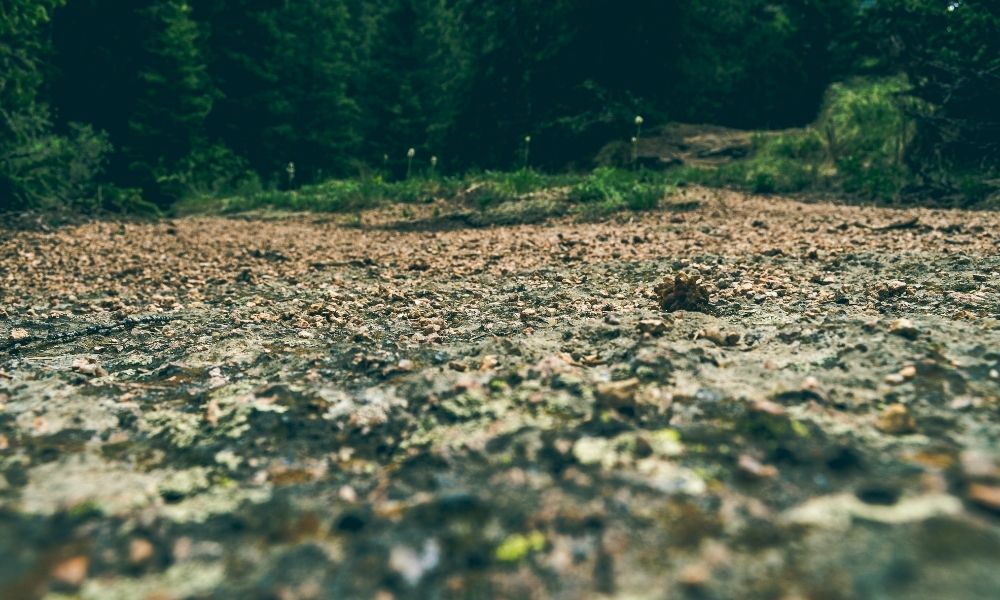
Which Are the Best Trees for Wet Soil: Thriving Tree Specimens
It can be challenging choosing the ideal tree for your backyard, especially if the soil’s conditions are less than perfect. So, if you want to find the best trees for wet soil, you definitely need to pick a tree that thrives in those environments.
Below you’ll find a list of the best trees for wet soils, even on standing water:
River Birch
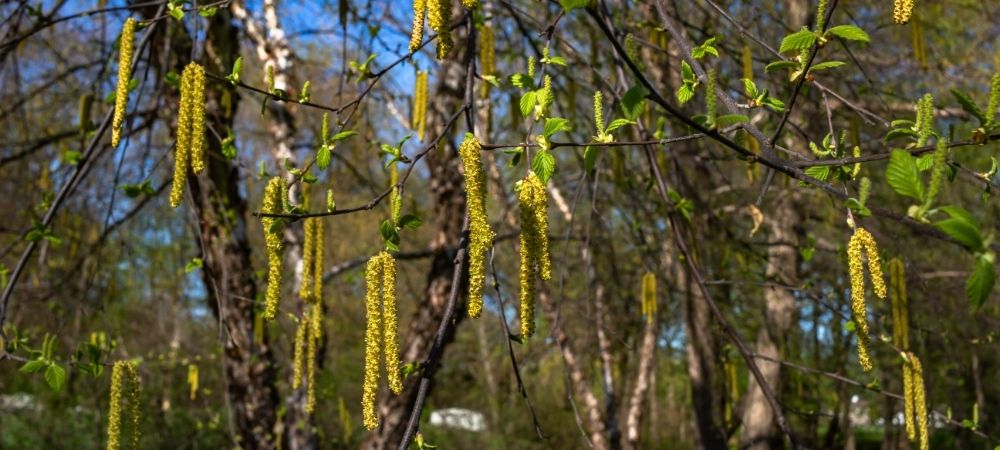
River birch trees are known for their distinct golden-yellow fall foliage. They are medium to tall size trees and a popular, fast-growing tree choice for most yards. In addition, its standing style and peeling bark make them look casual and stately.
They grow 3-4 feet per year, and when fully grown, they can reach up to 50 feet. Additionally, this kind of tree thrives in wet soil.
It may also be known as black birch, red birch, or water birch. Its sun exposure should be full sun to part shade. The salmon-red peeling bark will add color across seasons.
This tree thrives in wet soil, such as along ponds or in low-lying areas. Also, dwarf varieties can be used as foundation trees or in rainwater harvesting.
Characteristics
- Botanical Name: Betula Nigra
- Mature Size: 50-70 feet tall
- Bloom Time: Spring
- Plant Hardiness Zone: 4 to 9 US
- Toxicity: Non-Toxic
Red Maple Tree

The red maple tree gets its name from its beautiful, brilliant red foliage. In the autumn, its leaves become the focal point of any landscape.
Furthermore, these trees vary in size depending on the cultivar and location. Usually, they grow to 40 to 70 feet tall, spreading 30 to 50 feet.
They areually found in moist woods or wet bottomlands, but it can be found in drier rocky areas as well.
Characteristics
- Botanical Name: Acer Rubrum
- Mature Size: 40 to 70 feet tall
- Bloom Time: Spring
- Plant Hardiness Zone: 3 to 9
- Toxicity: Non-Toxic
Weeping Willow Tree
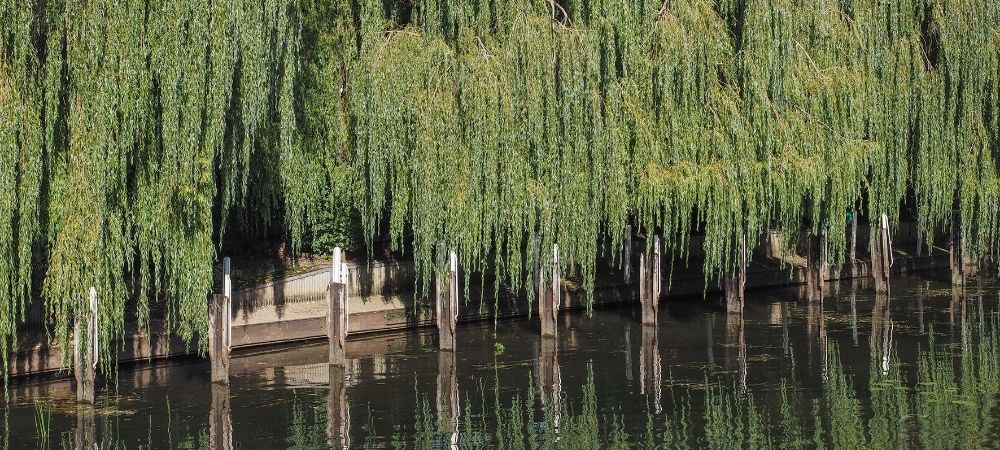
Weeping willow trees are known for their graceful arching stems. The leaves of these trees are lance-shaped and dangle delicately in the breeze.
Besides loving wet soil, the weeping willow is one of the most fast-growing, elegant, and colorful trees out there. In addition, they are incredibly low-maintenance trees that will enhance your landscape.
They can grow up to 50 feet tall and wide, and their sun exposure should be full sun.
Characteristics
- Botanical Name: Salix Babylonica
- Mature Size: 35 to 50 feet tall
- Bloom Time: Late Winter
- Plant Hardiness Zone: 4 to 10
- Toxicity: Non-Toxic
Bald Cypress

Bald cypress has a peculiar pyramidal growing shape, and it displays a particular habit of developing cypress “knees.”
The ideal sun condition for this tree is full sun, meaning it should get unfiltered sunlight at least six hours per day.
Bald cypress has a coloring range from yellowish in spring to light green in the summer to an orangish-brown tone in autumn.
Characteristics
- Botanical Name: Taxodium Distichum
- Mature Size: 60 to 80 feet tall
- Bloom Time: Spring
- Plant Hardiness Zone: 4 to 10
- Toxicity: Non-Toxic
Pin Oaks
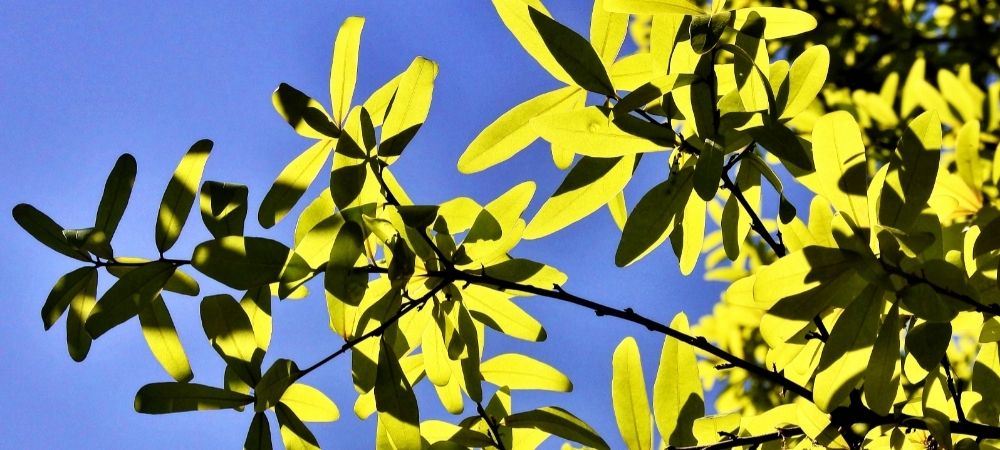
Pin oaks are large, ovate-shaped trees with a growth rate of up to 80 feet tall.
They are fantastic trees for large landscapes due to their fast growth, bright fall color, and winter interest. This oak tree does not mind the dry soil, heat, poor air quality, or wet areas. It thrives in a wide range of environments.
Characteristics
- Botanical Name: Quercus Palustris
- Mature Size: 50 to 70 feet tall
- Bloom Time: Spring
- Plant Hardiness Zone: 4 to 8
- Toxicity: Non-Toxic
Dawn Redwood

The dawn redwood is a very versatile tree. It grows in acidic, wet, sandy, loamy, and clay soils. While this tree tends to prefer moist environments, it can withstand flooding and is drought tolerant.
It thrives in full sun and grows much faster than any other type of evergreen.
Characteristics
- Botanical Name: Metasequoia Glyptostroboides
- Mature Size: 70 to 100 feet tall
- Bloom Time: Spring
- Plant Hardiness Zone: 5 to 8
- Toxicity: Non-Toxic
Sweetbay Magnolia
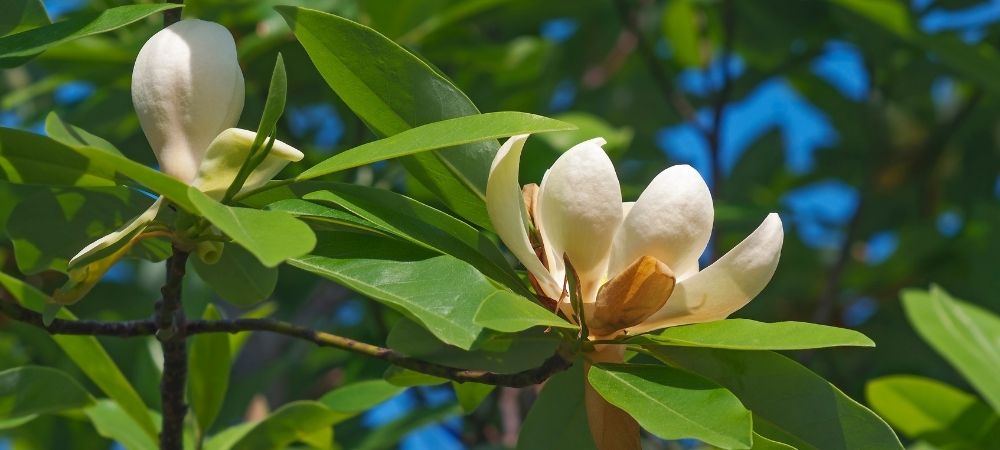
Sweetbay Magnolia is a famous flowering tree that produces a sweet vanilla smell throughout the flowering season.
They love wet soil and even survive in standing water environments. This tree thrives in full sun and partial shade, preferring a minimum of four hours of direct sunlight per day.
It has an elegant shape, and it would make an excellent specimen or patio tree. In late summer, the bright scarlet-red seeded fruit ripens, attracting numerous birds.
Characteristics
- Botanical Name: Magnolia Virginiana
- Mature Size: 10 to 20 feet tall
- Bloom Time: Spring
- Plant Hardiness Zone: 5 to 9
- Toxicity: Non-Toxic
American Sycamore
Known as the “King of the Native Trees,” American sycamore can grow 75 feet tall. Its leaves have a woolly, light green tone and its white upper branches undoubtedly light up any landscape.
They prefer full sunlight and can tolerate weeks of flooding.
Characteristics
- Botanical Name: Platanus Occidentalis
- Mature Size: 60 to 80 feet tall
- Bloom Time: Spring
- Plant Hardiness Zone: 4 to 9
- Toxicity: Non-Toxic
Atlantic White Cedar
Although it’s called Atlantic white cedar, this tree is actually part of the cypress family. Its bark is kind of reddish, and its flowers have a green-yellowish tone.
Individual trees can live for up to a thousand years but stand rarely live for more than 200 years.
Fun fact: During the revolutionary war, people used white cedar charcoal to make gunpowder.
Characteristics
- Botanical Name: Chamaecyparis Thyoides
- Mature Size: 50 – 75 feet tall
- Bloom Time: Spring
- Plant Hardiness Zone: 4 to 9
- Toxicity: Non-Toxic
PawPaw
PawPaw tree characterizes as having the largest North American fruit with a custard texture and tropical flavor.
These small trees can fit into any landscape and thrive in river-bottom lands because of the deep, wet soil. Pawpaw typically blooms in springtime, and it is known for having the perfect flower.
Characteristics
- Botanical Name: Asimina Triloba
- Mature Size: 25 feet tall
- Bloom Time: Spring
- Plant Hardiness Zone: 5
- Toxicity: Non-Toxic
While this is a list of some of the best trees for wet soil, you should consider many factors when deciding to plant one of these beautiful trees. Without a doubt, you need to consider the size, roots, dense branching, and moisture requirements.
If you’d like assistance in the process of choosing a tree to plant on your property, give us a call, and our team will gladly help you out.



